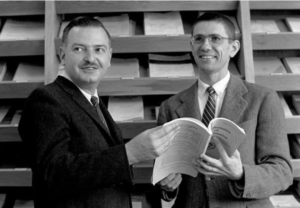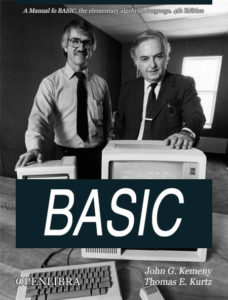BASIC Programming Language

John G. Kemeny and Thomas E. Kurtz. Image Source: www.computerhistory.org
Looking for a programming language for non-specialists, in 1964 John G. Kemeny and Thomas E. Kurtz published the first version of BASIC, an acronym for “Beginners’ All-purpose Symbolic Instruction Code”, in order to facilitate students (and teachers) from other fields outside of computing computer programming. In order to facilitate rapid dissemination to the target audience, Kemeny and Kurtz make the compiler code public.
Influenced by Fortran and ALGOL, the language is designed with its characteristics but modifying the syntax in order to make it more natural. BASIC allowed the use of matrix arithmetic and the use of character strings.
Pioneer for allowing the development and simultaneous testing of programs, the language spreads rapidly from minicomputers of that time, such as the PDP-11, to the first microcomputers of the 1970s and 1980s. The limited availability of resources of these computers and the own characteristics of the language, makes that a BASIC interpreter is usually implemented instead of a compiler. These features also facilitate its inclusion in programmable calculators from different companies (such as Casio, Texas Instrument or HP)

OpenLibra. BASIC 4th Edition
Originally not structured, although there are different versions of a second generation of procedural BASIC, the best known evolution of Basic is (the third generation) Visual Basic, introduced in 1991 by Microsoft. With certain features of object programming and the fact that it was the basis for macro programming for various applications on MS Windows, it soon became the solution for many small businesses to develop their own IT solutions internally. As a measure of impact on the community, Visual Basic occupies the 6th position (2021) in the TIOBE ranking of popularity of programming languages.
BASIC
Born:1964
Evolution: Visual Basic (1992);
Influences of: Fortran; Algol 60;
Influences: —
